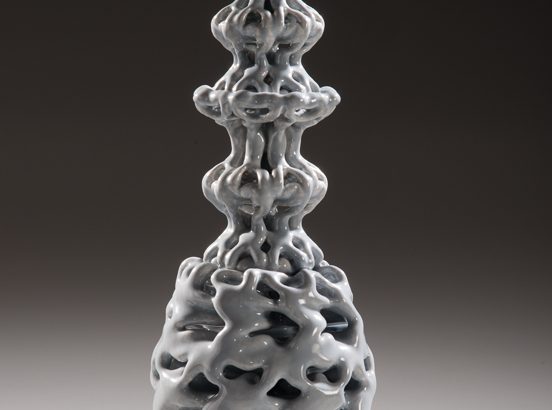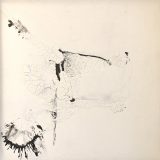
3D Printing Ceramics Kate Blacklock's stunning 3D Printed Work
June 26, 2019
The Art Collections at Chapman recently received a generous gift from the Ellingson Family, that allows us enhance the student experience through beginning a collection of contemporary ceramics. Over the coming weeks our blog will introduce some of our new ceramics acquisitions. This week we focus on a work from Kate Blacklock that might initially appear like a traditional vessel, but is actually the result of a new 3D printing process. 
Kate Blacklock is a sculpture and ceramic artist based in Providence, RI. She received her undergraduate degree from the University of California at Santa Cruz (’79) and her MFA (’87), in Ceramics from the Rhode Island School of Design. She currently teaches Industrial Design at Rhode Island School of Design. She is known for her sculptural ceramics, bu has recently been exploring 3D printing, photography, and painting. She has brought 3D printing to the forefront of modern ceramics and has encouraged her students and experienced artists to try this new medium. The process of 3D printing allows artists who would not normally pursue ceramics to work with the medium. In a podcast interview with 3D Print Ceramics she says,
“I like the idea that folks that do not have ceramic sculpting backgrounds could now work on it. It offers the capability for artists to use the material even though they do not have the knowledge of the material.”- Kate Blacklock
In January 2014, she began working with 3D Systems to create an exhibit solely for 3D printed sculptures. This allowed artists from different backgrounds to come together. Blacklock has created very intricate and structurally challenging pieces. The printing process involves using powder that layers to create a ceramic body. This body is designed using a computer model.
To get a visual explanation of the 3D printing process, watch this video, featuring Kate Blacklock and 3D Systems:
http://https://youtu.be/18MRGJtidaI
The process begins with the computer model that the artist designs. This model must be physically sound, just like in classic ceramics. The model is then placed into a virtual box that reflects the “build box” of the 3D printer. The powder allows the piece to range in size and orientation because the surplus of powder will fill the box. The next step is the physical printing. The artist selects a build and adjusts the guidelines for the powder and the binder. The piece is then printed with a simple push of a button. The computer begins by cutting the build into very thin pieces. This allows the computer to collect the data in order to print the piece. One part of the printer is called the “feed bin.” This section is then filled with powder. A “spreader” then spreads the powder into very thin layers onto the “build platform.” Next, an inkjet printhead, such as those in normal office printers, applies binder onto the solid pieces. This allows the powder particles to combine. The build platform moves down as new layers are created on top. These steps repeat until every layer is created and bound together. Then the piece must dry slowly and evenly. The object stays in the printer for about twelve to forty eight hours. Once it drys, the next step is “depowdering.” The excess powder is removed, usually with a brush. The last step is to use an airbrush to get rid of any last bits of powder. The object is then bisque fired just as it would be in traditional ceramics.
We are very proud to have one of Kate Blacklock’s 3D printed ceramics in out collection, which is titled: “Vessel N.” Kate Blacklock recognizes that 3D printing allows creative sculptures to come to life, even to those who have less proficiency in ceramics. She has brought about a collaboration between traditional ceramics and the new technology of 3D printing.
You can learn more about Kate Blacklock by visiting her website: www.kateblacklock.com
Vessel N
Ceramic
2019.5.1


